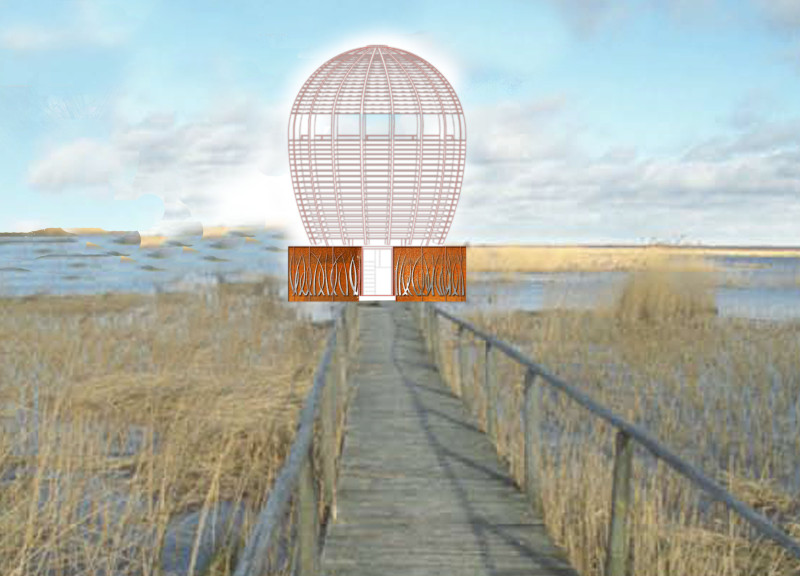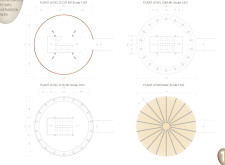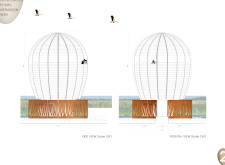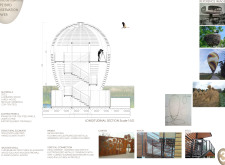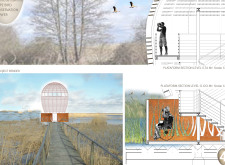5 key facts about this project
### Project Overview
The Pape Bird Observation Tower is located in a natural habitat conducive to avian observation and is designed to enhance the birdwatching experience. The intent is to create an unobtrusive structure that harmonizes with the surrounding environment while providing an elevated platform for observers. The design draws inspiration from organic forms found in nature, specifically the shapes of birdcages and eggs, to underscore its connection to the primary function of avian exploration.
### User Experience and Accessibility
The spatial configuration promotes an intuitive movement through various observation points, allowing users to engage with their surroundings effectively. The circular layout facilitates panoramic views, offering a comprehensive 360-degree perspective of the landscape. In consideration of inclusivity, the design integrates features that enhance accessibility for individuals with mobility challenges, thereby fostering community engagement and ensuring that the observation experience is available to a wider audience.
### Material Selection and Sustainability
A careful selection of materials reinforces the tower's environmental commitment. Structural elements include steel for its robustness and laminated wood for aesthetic and durable finishes. Larch wood, known for its decay resistance, ensures longevity in outdoor conditions, while Corten steel introduces an organic quality that evolves with the surrounding landscape. The design aims to minimize the carbon footprint, utilizing materials that blend with the natural environment and support the structure’s functionality as a birdwatching platform. Key design features such as layered observation platforms and a distinctive base with intricate cut-outs contribute both to the structure's visual appeal and its practical aspects, anchoring it within its natural context.


